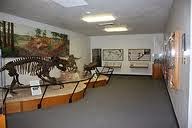Over the last few weeks, we have been looking at the various aspects of STEM and how you can encourage your child at home.
Do you feel like computers are taking over and all the jobs in the future will require computer skills? Do you ever feel like your child knows computers better than you do? Let's face it; they probably do. They are digital natives. Computers are a first language for them. For us, we learned a typewriter first. Or, maybe we learned on a word-processor. We remember the days when computers were for research papers and not for digital storytelling with video and music. But, since computers are a part of our students' daily lives, we need to support our students.
How do I support my child?
Chances are, if you have a smartphone, you probably have an Angry Birds or Minecraft app. That's fine. In fact, this year, our high school students used Angry Birds to design a life-sized trebuchet (type of catapult) to launch pumpkins across a field. STEM Club students will use Minecraft to design a dam that will replicate the Miner Flat Dam on the reservation. But, what about other apps? There are literally thousands. How is a parent to choose?
The easiest way is to search using the words "best apps for education". Many apps offer a freemium version. Freemium refers to apps that are free to download but require payment for special options. Think: Candy Crush Saga. You might have downloaded it for free but then were tempted to spend $1.99 to buy a candy bomb or more lives. Many math apps are freemiums. The beginner levels are free and then as you advance through the grades, they will charge you. I encourage you to try the free versions. You may discover that your child is not motivated by that app. It happens. They might not like the graphics or the "awards" they earn for passing levels. No loss. You didn't pay for it anyway. But don't stop there. Go online and search for another math app that they might like. If you find one that truly engages them and is educationally sound, you might want to spend the $3.00 to upgrade for the next 5 levels.
There are just as many (if not more) apps for English Language Arts. There are apps that have the child trace the letters. Some flash sight words on the screen. Many are e-readers. E-readers are books online. There are many different types of e-readers. Some are simply words on a page. This is similare to Kindle. Many have pictures. And even others have the option to have the page read to your child. Again, download a few and see which ones hold your child's attention.
If you have an android phone or device, you can start your search here.
If you have an iPad or iPhone, you can start your search here.
For Math apps, click here.
For Science apps, click here.
For Reading apps, click here.
Let's start a discussion. What are some of your favorite apps?
STEM@home is a series focusing on bring STEM activities into your home. Read on and experience STEM@home today:
STEM@home: Science - Watching Science on TV
STEM@home: Science - Exploring national parks
STEM@home: Technology - Using apps to support your child
STEM@home: Math - Playing dice and card games to support math skills


















